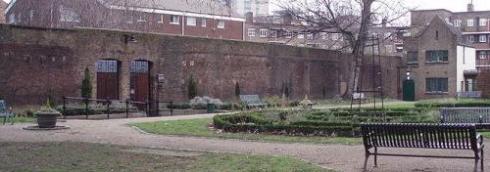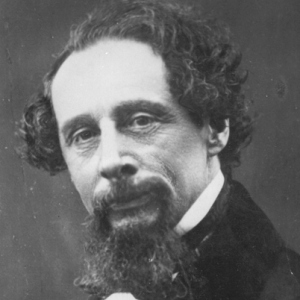Every time I pass through Borough I make a short visit to look at the crumbling remains wall of Marshalsea Prison. The once infamous prison no longer stands there, except for a single surviving wall, but it is forever immortalised in Charles Dickens’ novel, Little Dorrit.
Dickens wrote about Marshalsea from first-hand experience as his father was imprisoned here for a debt to a baker. As a result, Dickens was forced to leave school at the age of 12 and work in a ‘blacking warehouse’, where he earned a wage of 6 shillings a week, to help support his family.
Marshalsea was a debtors prison, which also housed sailors under sentence of court martial, and political figures accused of sedition. Dickens described the jail as “an oblong pile of barrack building, partitioned into squalid houses standing back to back; environed by a narrow paved yard, hemmed in by high walls spiked at top.”
Run privately for profit, the Marshalsea was run like an extortion racket. Debtors were segregated from the criminals, and they had to pay an admission fee for their accommodation at the prison, the quality of which depended on how much they could afford. For prisoners who could pay, there was access to a bar, shop and restaurant, and they were let out to work during the day. Everyone else was crammed into one of nine small rooms with dozens of others, possibly for decades for the most modest of debts.
Marshalsea was particularly unusual because the prisoners’ family and children were housed with them, which made it unbearably overcrowded. An investigation by a parliamentary committee in 1729 revealed a scandalous abuse of power involving torture, deliberate starvation and prisoners being suffocated to death, such were the cramped and inhumane conditions. The report revealed that 300 inmates had starved to death within a three-month period, and as many as ten prisoners were dying every 24 hours in the warmer weather.
The diary of John Baptist Grano, a musician imprisoned for debt, gives us an intimate glimpse of Marshalsea at this time and shows us the reality of two prisons existing in one establishment.
The ‘master’s side’ for those who could pay for their keep and the dreadful ‘common side’ where prisoners were deprived of all charitable assistance until they were helped by their friends or starved to death. Marshalsea is therefore a reminder of the injustice, oppression and rapacious profiteering that underpinned daily life in the eighteenth-century metropolis.
Marshalsea was closed by an Act of Parliament in 1842 and the lands sold off. This quote from Little Dorrit sums up many people’s attitude towards the prison: “Thirty years ago there stood, a few doors short of the church of Saint George, in the borough of Southwark, on the left-hand side of the way going southward, the Marshalsea Prison. It had stood there many years before, and it remained there some years afterwards; but it is gone now, and the world is none the worse without it.”
Just before writing Little Dorrit, Dickens decided to come here again to see what remained of the prison. He found that ‘the front courtyard, often mentioned in the story, had become a butter shop, and the former walls and the prison were now just part of the neighbourhood, but the grim old prison continued to have a powerful impact on Dickens throughout his life, and may even have contributed to the bouts of depression he experienced later in life.
Looking back on the dark days of 1824 when he visited his father in prison, Dickens wrote: “my whole nature was so penetrated with grief and humiliation…that even now, famous and happy, I often wander desolately back to that time of my life in my dreams.”
Opposite the prison site is the Church of St George the Martyr, a building which Dickens also visited regularly. The present church, believed to be the third on this site, was built in the 1730s and is commonly known as “the Little Dorrit church” after the character in the Dickens’ novel, who was born in Marshalsea and both christened and married at St George’s.
Dickens lived a short distance away in Lant Street, lodging in a house that belonged to the Vestry Clerk of St George’s. He set several scenes of the novel in and around the church and there is a small representation of Little Dorrit in the east window of the church.
Tim Russell



Leave a comment